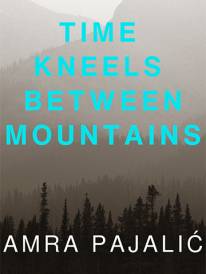Harrison Ford, Daniel Craig, Cowboys and Aliens
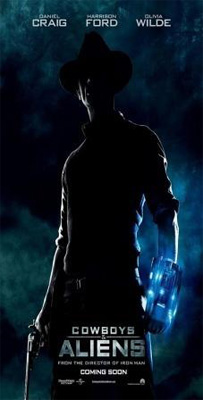
Cowboys and Aliens
Cast: Harrison Ford, Daniel Craig, Olivia WildeDirector: Joe Favreau
Genre: Action, Thriller
Synopsis: 1873. Arizona Territory. A stranger (Craig) with no memory of his past stumbles into the hard desert town of Absolution. The only hint to his history is a mysterious shackle that encircles one wrist. What he discovers is that the people of Absolution don't welcome strangers, and nobody makes a move on its streets unless ordered to do so by the iron-fisted Colonel Dolarhyde (Ford). It's a town that lives in fear.
But Absolution is about to experience fear it can scarcely comprehend as the desolate city is attacked by marauders from the sky. Screaming down with breathtaking velocity and blinding lights to abduct the helpless one by one, these monsters challenge everything the residents have ever known.
Now, the stranger they rejected is their only hope for salvation. As this gunslinger slowly starts to remember who he is and where he's been, he realises he holds a secret that could give the town a fighting chance against the alien force. With the help of the elusive traveler Ella (Olivia Wilde), he pulls together a posse comprised of former opponents-townsfolk, Dolarhyde and his boys, outlaws and Apache warriors-all in danger of annihilation. United against a common enemy, they will prepare for an epic showdown for survival.
Release Date: 11th of August, 2011
About the Production
Manifest Destiny: The Project BeginsThe promise of the title "Cowboys and Aliens" was so compelling that the movie rights to Platinum Studios chief Scott Mitchell Rosenberg's graphic novel were snatched up before the book was even completed. It was so intriguing, as executive producer Steven Spielberg recalls: "I kept wondering why no one had done anything like this before."
The cover art for the comic made Oscar®-winning producer Ron Howard a believer from the first time he saw it. He summarises: "It was everything I hoped for and beyond: the coolest version of the West meeting some badass aliens. It's the West, with all of its tensions. It was cool for me to see characters who would have been shooting at one another a few days before suddenly forced to try and survive together."
Scott Mitchell Rosenberg's graphic novel detailed a terrifying invasion set in the mysterious land of the American West in the late 19th century. Replete with gunslingers, outlaws and saloon fights, the harsh backdrop provided a unique place for the otherworldly assault on our planet. With the end of the Civil War only a decade prior, innovations in technology and industry-from the light bulb to telegraphs and transcontinental railways-shared space with a violent expansion of the young country. It would not be uncommon for cattlemen to encounter Chiricahua Apache in the New Mexico Territory during this time, and encounters were rarely friendly. When these classic antagonists realise they have a shared enemy, interactions move from grim to cooperative.
In the 14 years since Scott Mitchell Rosenberg first showed what was to be the "Cowboys and Aliens" graphic novel, many have grappled with the conundrum of how to bring these two classic genres together on film. Iron Man screenwriters Mark Fergus and Hawk Ostby, as well as writer Steve Oedekerk, known for his work on Bruce Almighty, crafted the screen story that would serve as the basis for the screenplay of Cowboys & Aliens. In addition, Mark Fergus and Hawk Ostby share screenwriting credit on the film.
Recalls Hawk Ostby: "We were brought onto Cowboys & Aliens just as the Iron Man shoot was wrapping up, and were offered a chance to create an entire story universe on a blank slate. There was an existing graphic novel, which we very much admire, but we chose instead to be inspired by the novel's indelible cover art: a cowboy on horseback, racing away from a looming spaceship overhead."
Mark Fergus loved that residents of the Old West didn't possess the mindset to "process the impossible." He says: "That image, not to mention that title, said it all for us. Bring the classic Western genre together with the alien invasion movie and the results could be mind blowing on the big screen." Indeed, the writing partners had the same reaction that Steven Spielberg had to the source material. Adds Mark Fergus: "It occurred to us as we started writing our first draft, 'Why hasn't anyone done this before? These two genres belong together.' We imagined the epic grandeur of John Ford's The Searchers, infused with the magic of Steven Spielberg's Close Encounters of the Third Kind. Every character in the piece touches on a classic Western archetype, but each also strives to be a rich, unique character in their own right."
The project would have to wait until 2008 before it would fire on all cylinders. Steven Spielberg, who had joined earlier with Imagine's Ron Howard and Brian Grazer, brought writers/producers Alex Kurtzman and Roberto Orci onto the project to get it ready for preproduction. Along with Damon Lindelof, the men reworked the screenplay to create a shooting script that fulfilled Imagine, Steven Spielberg and Scott Mitchell Rosenberg's ultimate vision for the project.
With the blockbuster successes of such films as the first two Transformers, Mission: Impossible III and the reimagining of Star Trek to their credits, Alex Kurtzman and Robereto Orci had more than proven themselves as exceptional storytellers on a big scale. The same was true of Lindelof, through his work as the showrunner of the television phenomenon Lost and producer of the Alex Kurtzman & Robereto Orci-scripted Star Trek. All were eager to work with the group of influential filmmakers whose work had so impacted them over the years.
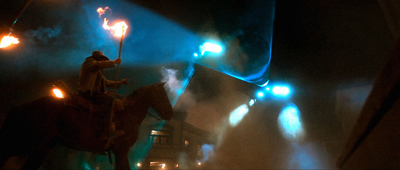 Academy Award®-winning producer Brian Grazer felt that the stars had finally aligned for the team to make the action-thriller. "Ron Howard and I have discussed that the Mayan culture is infused with the possibility of alien visitation," he notes. "We thought this was a brilliant starting point and wondered, 'Why couldn't it have happened in the Wild West?' After reading Scott Mitchell Rosenberg's story, we knew we wanted the film not to be tongue-in-cheek, but an entertaining look at what happens when two disparate worlds collide. The writing teams were able to capture that vision perfectly."
Academy Award®-winning producer Brian Grazer felt that the stars had finally aligned for the team to make the action-thriller. "Ron Howard and I have discussed that the Mayan culture is infused with the possibility of alien visitation," he notes. "We thought this was a brilliant starting point and wondered, 'Why couldn't it have happened in the Wild West?' After reading Scott Mitchell Rosenberg's story, we knew we wanted the film not to be tongue-in-cheek, but an entertaining look at what happens when two disparate worlds collide. The writing teams were able to capture that vision perfectly." Reflects Steven Spielberg: "What I respect about Alex Kurtzman and Roberteo Orci is that they wanted to keep this concept authentic. They've made it all real from the standpoint of the characters. Even if the aliens never came down in this film, there's still a tremendous story of conflicted characters in a range war. It's one that starts to bubble up to the surface in the very first act of Cowboys & Aliens. If it was just cowboys, it would be a pretty darn good cowboy story. If it was just aliens, it would be a pretty good alien story unto itself, but then when you combine the two…it's wonderful."
"When we heard the title, it immediately evoked some of our favorite titles that inspired us as kids," states Roberteo Orci. "We thought of films that have the various degrees of a sci-fi movie and films that are extremely emotional and heartwarming, like E.T., as well as movies that are extremely action packed, like Aliens. On the cowboys' side, we saw an opportunity from films we'd been inspired by, such as Unforgiven, which has people trying to come to terms with a past that has come back to haunt them or who must deal with crimes they are trying to outrun."
Roberteo Orci's writing and producing partner was equally intrigued by the prospect. Alex Kurtzman recalls: "In a world where studios are frequently looking for big titles, there aren't many that stand out, and this one did that for us. Not just because it's catchy, but because it held the possibility of genre blending in a way people had never seen before. That got us incredibly excited, and we knew that we wanted to dive in at the opportunity to make a Western and a sci-fi movie at the same time."
The men found the trick would be to strive for a balance between these distinct worlds of the lawless West and alien invaders. As Roberteo Orci says, however, it wasn't long before they understood the rationale for the project's lengthy gestation. "Although we heard the title and said, 'Let's do it!,' when we sat down to write, we realised it was going to be much harder than we initially thought. We knew that it had to feel organic and had to weave together naturally."
The collision of genres gave the writers a rich palette of archetypal characters and situations with which to play. They took the elements that fans of the Western are familiar with and reinterpreted them through the lens of an alien-invasion film. Alex Kurtzman notes: "It was about honoring specific tropes to each genre, then figuring out how to blend them. In the Western, everybody recognises the man with no name. He walks into town and everyone wonders who he is and what he's trying to do. The sci-fi spin on that is that he's the man with no name because he was abducted by aliens and doesn't remember who he was. He must discover his identity and come face-to-face with his past…while simultaneously becoming a hero to people whose loved ones have been taken by aliens."
In July 2009, Alex Kurtzman and Roberteo Orci made what was becoming for them (and many successful filmmakers of their generation) the annual pilgrimage to San Diego for Comic-Con. Coming off of the staggering success of the first Iron Man, director Jon Favreau was one of the convention's rising stars. As well, his work as director, producer, writer and actor included projects from independent films including Swingers to blockbuster comedies such as Elf. While Jon Favreau was returning to San Diego to discuss the sequel to his superhero odyssey, Alex Kurtzman and Roberteo Orci were representing much anticipated adaptations of Star Trek and Transformers, as well as one of television's exciting new properties, Fringe. It was during the convention that the three met at a party.
"I had heard about the project during the time that I was making Iron Man," remembers Jon Favreau. "I thought it sounded cool, so when Alex Kurtzman and Roberteo Orci approached me, I read the script and signed on. It was a great script, a real page-turner." What the filmmaker would bring to the project was a pitch-perfect tonal approach to the material. He aimed to take both genres seriously and to make the story appear quite real for both the people of Absolution and the moviegoers who came along for the ride.
Back in Los Angeles, Jon Favreau outlined his thoughts on Cowboys & Aliens in a meeting with Steven Spielberg, Ron Howard and Brian Grazer, and they were sold. "My idea was to embrace both genres," explains the director, "and through the juxtaposition of the classic form of both the alien-invasion movie and the Western create something new and exciting. I believe that people are thirsting for something like this."
His producers felt that Jon Favreau's passionate and unique take on genre fusion was just what the project needed. Steven Spielberg sums the team's thoughts on their director: "Jon Favreau has proven his eclectic approach in style and in content based on the subjects he chooses. What grounds him is that he comes at everything based on behavioral approaches. 'How would these characters behave? How can I make this more authentic?' The more the genre poses limitations on the filmmaker, Jon Favreau takes those limitations and turns them into tremendous advantages…based on his complete knowledge of acting and directing actors and writing great parts."
To inspire the team, Steven Spielberg arranged for a screening of a new print of John Ford's The Searchers. Jon Favreau was determined to draw on the elements that made classic Westerns successful, and in Steven Spielberg, Brian Grazer and Ron Howard he had something few filmmakers had at the ready. "Steven Spielberg's strong visual language is something I grew up on; it's influenced my work," says Jon Favreau. "Then to actually speak to the guy and to have him present me with an education in the Western, that was great."
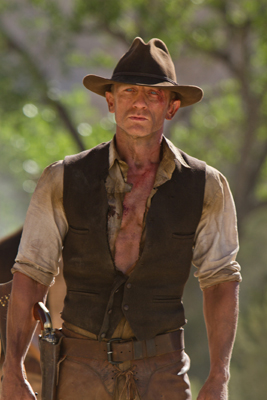 In his producers, Jon Favreau found a wealth of filmmaking knowledge that was always available. "So much in Hollywood is wandering around in the dark trying to figure it out for yourself," he says. "It's wonderful to be able to speak to someone who you have tremendous respect for. To have Steven Spielberg, Ron Howard and Brian Grazer as mentors at this place in my career is such a welcome luxury."
In his producers, Jon Favreau found a wealth of filmmaking knowledge that was always available. "So much in Hollywood is wandering around in the dark trying to figure it out for yourself," he says. "It's wonderful to be able to speak to someone who you have tremendous respect for. To have Steven Spielberg, Ron Howard and Brian Grazer as mentors at this place in my career is such a welcome luxury." Jon Kurtzman and Roberteo Orci agree with their director's assessment. The men sum: "Shepherding this movie from inception to release-not only as writers, but as producers with the likes of Steven Spielberg, Ron Howard, Brian Grazer and Jon Favreau-has been one of the true joys of our career. Our partnership was what we could imagine only in our wildest dreams: sharing a vision with passionate filmmakers, who also happen to be your heroes."
For creator/producer Scott Mitchell Rosenberg, seeing his labor of love finally come to the big screen has been a powerful experience. He notes, "I created this comic in '97 when Platinum was simply a piece of paper that was stuck to a door. Since Jon Favreau was hired as the director, he has totally had the feel for Cowboys & Aliens. You see that in everything he's done before, and whenever you sit in a room with him you get that he just gets it."
Bond Meets Solo: Casting Cowboys & Aliens
While action star Daniel Craig may not be the first person one considers when the words "American cowboy" come to mind, Jon Favreau, who transformed Robert Downey Jr. into a superhero in Iron Man, has a knack for inspired casting. He saw something both familiar and iconic in the British native that would fit the character of Jake Lonergan, the lone, amnesiac stranger who wanders into the former boomtown of Absolution just in time to save it from total annihilation.
"He was the first cast member we brought on," explains the director. "I realised in talking with him and looking at him that he has this gruff, handsome, Steve McQueen-type quality." Rugged good looks notwithstanding, Daniel Craig has a gift for conveying much with few words. "The language of the Western is about action, not dialogue," says Jon Favreau. "I usually have a fire hose of dialogue to use in my films, but here you have to make the action the dialogue, whether it's the gunfights or hand-to-hand combat. That's all part of Jake's personality, and Daniel Craig is able to carry that off really well. He says a lot with his actions. You see when his wheels are turning and he's up against everything."
A longtime fan of Butch Cassidy and the Sundance Kid, as well as Alien and Blade Runner, Daniel Craig didn't feel as if it would be a big leap to bring these genres together. Admitting that he "based his character very much on the silence of Clint Eastwood," Daniel Craig prepared for the part by seeing as many Westerns as he could. The actor says, "I watched a lot of John Wayne Westerns, but my favorite ones are the ones from the '70s-movies like Little Big Man and those so-called dirty Westerns where there's a little more reality."
When it came time to get into character, Daniel Craig offers that it was much easier to become Jake Lonergan than other roles that he tackled. He says, "The cowboy just comes out. We are in a desert, and I'm wearing chaps. I'm wearing a gun around my waist, I've got cowboy boots on and a hat and I'm riding a horse. I rode on a horse every day and I got paid to do it, so I couldn't have been happier."
Is the situation feasible? Daniel Craig believes that 19th-century settlers and Indians would be hardy enough to handle creatures from another world. He notes: "The idea is that survival kicks in. These people are very tough. They're frontier people, and we've got American Indian tribesmen who are a tough breed who have survived the outside world and all that Mother Nature has to throw at them."
One of the final roles to be cast was Harrison Ford's character, Woodrow Dolarhyde, Absolution's cattle-rancher benefactor…and the only man keeping the decaying town and its inhabitants from financial ruin. A Civil War colonel whose bitterness calcified after the bloody battle at Antietam, Dolarhyde is a brutal and cold-hearted tyrant, and he has it out for the man he thinks stole his gold: Jake Lonergan. As Roberto Orci explains, "If it weren't for the aliens, he'd be the bad guy in the film."
Though Spielberg and Ford have a long working relationship, it wasn't a given that the man who is inextricably linked with Indiana Jones and Han Solo would come aboard the project. Jon Favreau discusses how he managed to find a distinct identity for the iconic actor: "For my generation, he's like John Wayne. When people sit in their seats, they're bringing everything that has come before to their experience of watching a movie. You can't separate the actor from his work. I remember seeing Harrison Ford for the first time as Bob Falfa in American Graffiti, and then of course in Star Wars and Raiders of the Lost Ark. He has a roguish quality. He's always charming but with unpredictability; you never knew what he was going to do. There is a danger to him that we thought fit this role."
While he was initially intrigued by the project, Harrison Ford was also skeptical. Jon Favreau recalls: "He became interested after I showed him the concept art and explained that our approach was serious in tone; we weren't going to play this as a joke. Our goal was to juxtapose these two classic forms to create something new and exciting."
Admittedly, Harrison Ford's primary interest in the film fell on the cowboy side of the story. He says: "What's interesting is that these people back in 1875 in the Old West didn't have our experience of space travel and planetary understanding. When the invasion happens, they have no context in which to understand what was occurring. The only possible context is the one that was given to them by the preacher in town. The aliens were possibly demons and remained demons throughout the telling of the story."
A history buff, Harrison Ford shares a bit about how his character came to be: "The Western depends on the reality that it's every man for himself. They were on the edge of the frontier and had to depend on their own resources. The strong will and the strong man did prevail. Dolarhyde is an old rancher, the richest guy in town who disdains the Indians. He's a hard man who has a son who is not the best person…because of the advantages that his father accrued for him. The result of his dominant personality is expressed through this son who is a bully and a weak hand."
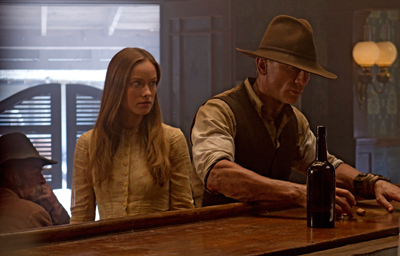 In addition to Jake Lonergan, the other stranger in the film brings further mystery to the denizens of Absolution and the surrounding territory. Ella seems to shadow Jake as he moves about the town, but when the skies open up and terror rains down, she alone knows what this enemy wants. For the role of Ella, the filmmakers sought an actress who would embody both the mystery and the toughness required of the only woman in a begrudgingly assembled posse of cowboys and Indians.
In addition to Jake Lonergan, the other stranger in the film brings further mystery to the denizens of Absolution and the surrounding territory. Ella seems to shadow Jake as he moves about the town, but when the skies open up and terror rains down, she alone knows what this enemy wants. For the role of Ella, the filmmakers sought an actress who would embody both the mystery and the toughness required of the only woman in a begrudgingly assembled posse of cowboys and Indians. Olivia Wilde, who has been a mainstay of the hit television show House M.D. since 2007 and has crafted a film career when not shooting the series, was hired for the production before anyone had seen her in the trailer for TRON: Legacy. In that moment, the filmmakers had never been more certain of their decision. "She's on for a just a split second," says Jon Favreau, "but her attitude and her look-how appealing and interesting she was-made me take note. Not just me, but the fanboys and a lot of people caught that one image from the trailer and picked up on it. She's also down to earth, soulful and genuine and a very nice, warm person. That dichotomy was interesting, and it encapsulated what we wanted for Ella."
The actress appreciated the writers' distinct take on a character that could have easily devolved into a damsel in distress. "Ella was immediately fascinating to me," recounts Olivia Wilde. "I read the script and fell in love with it. I thought, 'I have to play her.' In Westerns, the female characters tend to be the prairie woman or the cowgirl, often very strong and stoic but not usually one of the gang and rarely as intrinsic to the story as Ella is. She has a connection to Jake and a certain power over him that no one else has."
Jon Favreau would bring along not only key crew from Iron Man 2, but also one of that film's stars. Casting continued with Sam Rockwell, who played Tony Stark's unpredictable competitor, Justin Hammer, in the 2010 global hit. In Cowboys & Aliens, Sam Rockwell portrays the fish-out-of-water saloon owner called Doc who, along with his beautiful wife, Maria, has moved from the city out to the barren desert town of Absolution to eke out a living. When the aliens abduct Maria, Doc joins the posse to try and free her from the demons…though he's by no means a hearty adventurer.
For Sam Rockwell, Cowboys & Aliens tapped into childhood fascinations. "It takes me back to the stories we told as young boys," the actor shares. "We'd play with our little cowboys, and then we'd get our dinosaurs, our army men and our Indians and we'd mix them all together and make our own pretend movies."
Adam Beach was brought aboard to play Nat Colorado, the Indian-born ranch hand dedicated to his hard-nosed, adoptive father, Dolarhyde. The cattle boss' second-in-command, Nat is also charged with looking after the insolent and entitled scion of the most powerful man in Absolution. Adam Beach, a Canadian Saulteaux, liked the idea of turning the tables with this part. "I've never played a cowboy before," says the actor who grew up on the Dog Creek First Nations Reserve at Lake Manitoba. "I'm always the Indian, throwing the spear and shooting an arrow. I loved filming from this perspective."
Cast as the weasely thug Percy Dolarhyde, the only son of the richest man in the territory, was Paul Dano, who was previously seen as the conflicted preacher opposite Daniel Day-Lewis in There Will Be Blood. Paul Dano explains his character: "I play the spoiled, drunk, punk son of the cattle baron in town. My character feels entitled and acts how he wants because the town wouldn't be much without his father's money. Watching a lot of old Westerns, there are so many great parts and so many great character actors. In this movie, I felt like everybody had an opportunity to bring something to the table."
Noah Ringer, who played the title character in M. Night Shyamalan's The Last Airbender, was cast as Emmett Taggart, grandson of the town's sheriff. When his grandfather is abducted, Emmett joins the group of cowboys in search of their kin. The young performer shares: "Emmett is the only kid in the movie, so he's the one that expresses the emotion and makes people feel. He is really strong inside but the smallest person. He grows up a lot on this journey."
There was no problem bringing aboard a rich array of distinctive actors for all the roles in Cowboys & Aliens. In the 1870s, many men sported long beards, a sign of virility, while women grew their hair long and didn't dye their locks. "In the tradition of a lot of classic Westerns," explains Roberto Orci, "no role was too small, because every character is a stop along the way of the genre. We had people coming out of the woodwork to be on the film, and we ended up with an amazing cast."
Completing the primary cast are True Blood's Raoul Trujillo as the Chiricahua Apache chief, Black Knife; Mad Men's Abigail Spencer as Jake's lost love, Alice; The Tudors' David O'Hara as Lonergan's former gang member, Pat Dolan; and Justified's Walton Goggins and The Three Burials of Melquiades Estrada's Julio Ceasar Cedilo as bandits Hunt and Bronc, respectively. Finally, what Western would be complete without a nod to the Duke himself? John Wayne's grandson, Brendan Wayne, joins the cast as Deputy Lyle.
Caverns and Weaponry: Production Design and Props
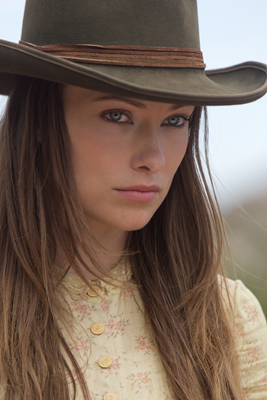 Production Design
Production Design Production designer Scott Chambliss was tasked with maintaining the balance between the two visually distinct worlds of Cowboys & Aliens, and he managed that with his distinct designs. "When you hear the title," says Robetero Orci, "it's easy to conjure up images of guys on horseback with Stetsons riding under flying saucers. But Scott Mitchell Rosenberg's approach was to meld these two worlds together, subliminally referencing the Old West in his design of the aliens and their world."
To maintain the integration of these two genres, all of the alien hardware, weapons, speeders-as well as the alien tower and its workings-needed to be tailored to a 19th-century sensibility and imagination. Jon Favreau asked for a setting in the throws of the Industrial Revolution…one of railways, steamships, telegraphs and tools with their multiple moving parts. This is the future from a decidedly late-Victorian vantage point.
Drawing inspiration from the sculptural work of American artist Lee Bontecou and the angular and geometric patterns of Brutalist architecture, the alien hardware is a far cry from the high-tech gadgetry or shiny antiseptic armor of much sci-fi imagery. Gritty and creepily biological, the invaders' nightmare technologies range from the 10-winged insect-like alien aircraft-ones that extend their long metal whip-like tentacles to snatch up their prey-to the giant vivisection tables, with their mammoth clamps and decrepit skin-like surface, encrusted with the blood of their victims.
Burrowed deep below the surface of the Earth are Absolution's loved ones, the aliens' victims…and the real motive behind the alien assault. The labyrinthine tunnels where the aliens extract the precious resource they've found and hold their human specimens hostage was built as the "cavern set." This equaled a series of subterranean spaces that correspond to the area beneath the remote New Mexico desert where the alien ship has touched down and where the final battle takes place.
After spending months preparing the New Mexico locations, Chambliss left the company to shoot in this state while he returned to stages 6 and 27 on the Universal Studios lot. There, he and his team spent months building two astonishing environments. Chambliss explains of the 19,200-square-foot set: "We wanted the cavern to feel like it is miles underground and goes on forever. These tiny tunnels open up into big, scary spaces and then close down into creepy areas where the aliens do unspeakable things to their human captives."
In addition to the series of tunnels where Jake and Ella race to free the human hostages and end the alien invasion, the cavern included the cave where prisoners are suspended like slaughterhouse animals…not to mention the surgery room where the aliens perform human vivisection.
The production designer found an innovative way to create the illusion of a vast underground space for the journey that Jake and Ella take after they penetrate the alien tower. Chambliss and his team created a modular set…an intricate puzzle of huge, dark rock walls and floors with interchangeable pieces that could be moved into different configurations to accommodate the actors and the shooting crew. Giant "rock icebergs" that were up to 14-feet tall were lifted by a gantry system or rolled around whenever Jon Favreau wished to change the sets.
Down from the cavern set, on stage 27, Chambliss fashioned a very different, but no less frightening, environment for an earlier scene in the film: the first face-to-face encounter with the alien. To set the stage, Jake, Dolarhyde, Ella, Doc, Meacham and young Emmett have set off in pursuit of their assailants. While riding across the high desert plains, they see something unusual in the distance: a paddleboat wheel propped upside down in the air. Disturbing, as there isn't a river for hundreds of miles. Something has plucked this riverboat up and tossed it out into the open desert as if it was a discarded toy.
Our heroes are seeking cover from the storm when they come upon the upturned riverboat. As Emmett wanders through the vessel exploring the wreckage, the space becomes more threatening. In this topsy-turvy place, he passes through an archway into the main casino. Its gambling tables and piano remain in pieces on the ground, while chairs are suspended from rafters and boulders jut up into the boat. In the corner, a shadow lurks.
After researching riverboats from the period, concept artists drew illustrations to demonstrate what the intact riverboat should look like. Starting with foam core models of an undamaged boat, the artists broke down the design to see how the set would look if a boat had been hurled about. "It's a combination of creating something based on a real object that is, at the same time, a very abstract sculpture," says Scott Chambliss, "all the while keeping in mind that we needed to make this a dynamic, unusual space for the actors."
Relying upon the artists' models, Scott Chambliss' team built the framework of the upside-down set. Complete with broken windows, uneven surfaces and pitched walls, the riverboat included mounted trophy heads, as well as cracked mirrors and kerosene lamps. When it came time to dress the set, the fun began. Laughs Scott Chambliss: "We had this beautiful furniture, casino tables, elaborate chandeliers, chairs, framed paintings…and then we got to destroy them. The crew and I had great fun throwing the stuff around, stomping on this and crushing that, seeing where it landed and deciding what worked."
Props
Iron Man and Star Trek property master Russell Bobbitt joined the team with the challenge of outfitting a 19th-century world with props from weaponry to whiskey bottles. He and his crew blended period research with fantasy invention to create a battery of props from three different but intersecting worlds. But hewing as close as possible to the historical record presented challenges when it came to outfitting one of those worlds.
Ella tells Dolarhyde and the chief of the Chiricahua Apache, Black Knife, that no matter the history of the Indians and the white man, they must come together to fight a common enemy. The Chiricahua are a formidable force that joins an already unlikely alliance of cowboys, outlaws and cattle baron to fight the aliens. Historically, this tribe were some of the last standing American Indians who fought against land incursions. Their steadfast resistance to white settlement nearly led them to extinction, leaving behind scant details about their way of life.
The few written or photographic records of the Chiricahua were created years after the period in which our story takes place and were often unreliable. The subjects in the photos taken close to the time frame were usually highly posed by European photographers, who would alter their dress and the items they carried to suit white men's image of who the Indians were and what they thought the Indians should represent.
What is clear is that the Apache were well-armed, skillful warriors; they used their bows and arrows, spears and shields with incredible precision and collected pistols and rifles from trades with and raids on European settlers. Russell Bobbitt and his team worked closely with the Apache technical consultants on the traditional weaponry-from lethal war clubs and stones lashed to heavy sticks, to shields made with layers of wet rawhide sewn around a frame and dried until they were rock solid.
Russell Bobbitt explains: "We learned what kind of feathers to use [turkey], how long the bows are [never more than 42 inches or under 30 inches], and we had everything, from lances to quivers, made properly under the supervision of our consultants."
Apache technical consultant Oliver Enjady and consultants from the Mescalero Apache even painted shields for Jon Favreau's team that were used during the war dance ceremony. Recalls Oliver Enjady: "I told them the designs were not Apache, and they went and got some paint. I pulled four men out of the group, and we painted the shields that appear in the film."
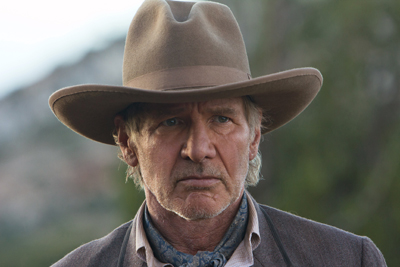 As New Mexico is so rich with Old West history, outfitting the movie's cowboys and settlers was a much easier task. The small Bible from which Meacham reads after the aliens attack on the town is actually an antique from the 1860s. Russell Bobbitt and his team were able to find a local blacksmith who used period tools-forged in a furnace the smith built himself-to create badges for Sheriff Taggart and his deputies. As well, the team discovered one of the few existing manufacturers of tintype photographs to create the mysterious picture of Alice that Jake discovers tucked away in his hat.
As New Mexico is so rich with Old West history, outfitting the movie's cowboys and settlers was a much easier task. The small Bible from which Meacham reads after the aliens attack on the town is actually an antique from the 1860s. Russell Bobbitt and his team were able to find a local blacksmith who used period tools-forged in a furnace the smith built himself-to create badges for Sheriff Taggart and his deputies. As well, the team discovered one of the few existing manufacturers of tintype photographs to create the mysterious picture of Alice that Jake discovers tucked away in his hat. His horse and his hat excluded, a cowboy's gun is his most prized possession. Colonel Woodrow Dolarhyde is one of the few men of means in our story, and his weapon, an Uberti 1873 Army Colt, his ornately custom-designed holster and his gun belt reflect his history and social standing.
Thell Reed, a Western gunslinger and one of Hollywood's top gun coaches, worked closely with the actors in the weeks prior to shooting. Thell Reed not only showed them how to handle their period weapons, but also taught them some of the flourishes characteristic of Western gun use. "Thell showed them how to fan the weapon, how to properly pull back on the trigger," says Russell Bobbitt, "and he showed them crazy moves like how to spin your gun before it goes back into the holster."
While the pearl-handled Colt was perfectly suited for an ex-army colonel and wealthy cattle baron, Jake wakes up in the film's opener with no gun. That won't do, so he takes a weapon from the three men who ambush him in the desert…then eventually ends up with an 1851 Navy Colt he pulls off of a dead wagon driver. For Jake, however, it's not a gun, but the strange metal shackle on his wrist that becomes his signature (and most powerful) weapon.
The "blaster" is what the company called the thick metal brace our hero finds on his wrist when he wakes up at the beginning of the story. During the lethal alien attack on Absolution, the metal band transforms, and Jake-as well as everyone else-realises he has the single most powerful weapon to protect them from the alien onslaught. Creating the futuristic piece attached to Jake's arm presented the filmmakers with a big design challenge.
"We wanted a prop that wouldn't stop the whole town when they saw it," explains Russell Bobbitt, "so it was designed to look like something that could've been familiar to them, a kind of shackle, something that could've been used to imprison him."
Like many of the alien elements in the film, the blaster is a blend of period research and fantasy invention. With its tarnished, brown steel surface and clocklike mechanism, it's meant to look like something one would find in the West in 1875. Although some of the movements of the weapon are enhanced by computer graphics, much of it-with its lights and moving parts-is real. Duplicate weapons, especially the old guns, were required for filming, but there were actually 30 blasters created to accommodate various scenes, action and weather.
Cowboys and Aliens behind the scenes
www.femail.com.au/cowboys-and-aliens-behindthescenes.htm
MORE
- Emma Stone Magic in the Moonlight
- Jessica De Gouw Cut Snake
- Maxine Peake Funny Cow
- Denzel The Equalizer 2
- Johnny Flynn Beast
- Logan Marshall Green Upgrade
- Shailene Woodley Adrift
- Eric Toledano and Olivier Nakache C'est La Vie...
- André Leon Talley The Gospel According To André...
- Shakespeare In Tokyo
- Mission: Impossible Fallout
- Glenn Close The Wife
- Allison Chhorn Stanley's Mouth Interview
- Benicio Del Toro Sicario: Day of the Soldado
- Dame Judi Dench Tea With The Dames
- Sandra Bullock Ocean's 8
- Chris Pratt Jurassic World: Fallen Kingdom
- Claudia Sangiorgi Dalimore and Michelle Grace...
- Rachel McAdams Disobedience Interview
- Sebastián Lelio and Alessandro Nivola...
- Perri Cummings Trench Interview



